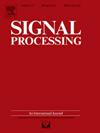Deep evidential reasoning rule learning
IF 3.4
2区 工程技术
Q2 ENGINEERING, ELECTRICAL & ELECTRONIC
引用次数: 0
Abstract
Deep learning has achieved great success in the past years. However, due to the uncertainty in the real world, the concerns on building reliable models have been raised. However, most current strategies can't achieve this goal in a unified way. Since the recently developed evidential reasoning rule (ER2) which is a general and interpretable probabilistic inference engine can integrate reliability to realize adaptive evidence combination and overall reliability is introduced to measure the credibility of output, it is an ideal strategy to help deep learning build more reliable model. As such, a new deep evidential reasoning rule learning method (DER2) is developed in this study. DER2 consists of training, adaptation and testing stage. In training stage, deep neural network with multiple fully connected layers is trained. In adaptation stage, reliability is introduced to tune the trained model to obtain the adapted output for a given test sample. In testing stage, not only the predictive output probability is obtained, but also the overall reliability is estimated to measure the credibility of model output so that the decision maker can determine whether the predictive results should be trusted or not. Meanwhile, the model output can be interpreted through the case-based way. The experimental results demonstrated that DER2 can obtain better performance when introducing adaptation stage and a high-quality credibility measurement can be realized through overall reliability as well.
深度证据推理规则学习
深度学习在过去几年取得了巨大的成功。然而,由于现实世界的不确定性,建立可靠的模型的担忧已经提出。然而,目前大多数战略都无法统一实现这一目标。最近发展的证据推理规则(ER2)是一种通用的、可解释的概率推理引擎,它可以整合可靠性来实现自适应证据组合,并引入整体可靠性来衡量输出的可信度,是帮助深度学习构建更可靠模型的理想策略。为此,本研究提出了一种新的深度证据推理规则学习方法(DER2)。DER2包括训练阶段、适应阶段和测试阶段。在训练阶段,训练具有多个全连接层的深度神经网络。在自适应阶段,引入可靠性对训练模型进行调整,以获得给定测试样本的自适应输出。在测试阶段,不仅要得到预测输出的概率,还要估计整体的可靠性,以衡量模型输出的可信度,以便决策者判断预测结果是否可信。同时,可以通过基于案例的方式对模型输出进行解释。实验结果表明,DER2在引入自适应阶段时可以获得更好的性能,并且可以通过整体信度实现高质量的信度测量。
本文章由计算机程序翻译,如有差异,请以英文原文为准。
求助全文
约1分钟内获得全文
求助全文
来源期刊

Signal Processing
工程技术-工程:电子与电气
CiteScore
9.20
自引率
9.10%
发文量
309
审稿时长
41 days
期刊介绍:
Signal Processing incorporates all aspects of the theory and practice of signal processing. It features original research work, tutorial and review articles, and accounts of practical developments. It is intended for a rapid dissemination of knowledge and experience to engineers and scientists working in the research, development or practical application of signal processing.
Subject areas covered by the journal include: Signal Theory; Stochastic Processes; Detection and Estimation; Spectral Analysis; Filtering; Signal Processing Systems; Software Developments; Image Processing; Pattern Recognition; Optical Signal Processing; Digital Signal Processing; Multi-dimensional Signal Processing; Communication Signal Processing; Biomedical Signal Processing; Geophysical and Astrophysical Signal Processing; Earth Resources Signal Processing; Acoustic and Vibration Signal Processing; Data Processing; Remote Sensing; Signal Processing Technology; Radar Signal Processing; Sonar Signal Processing; Industrial Applications; New Applications.
 求助内容:
求助内容: 应助结果提醒方式:
应助结果提醒方式:


